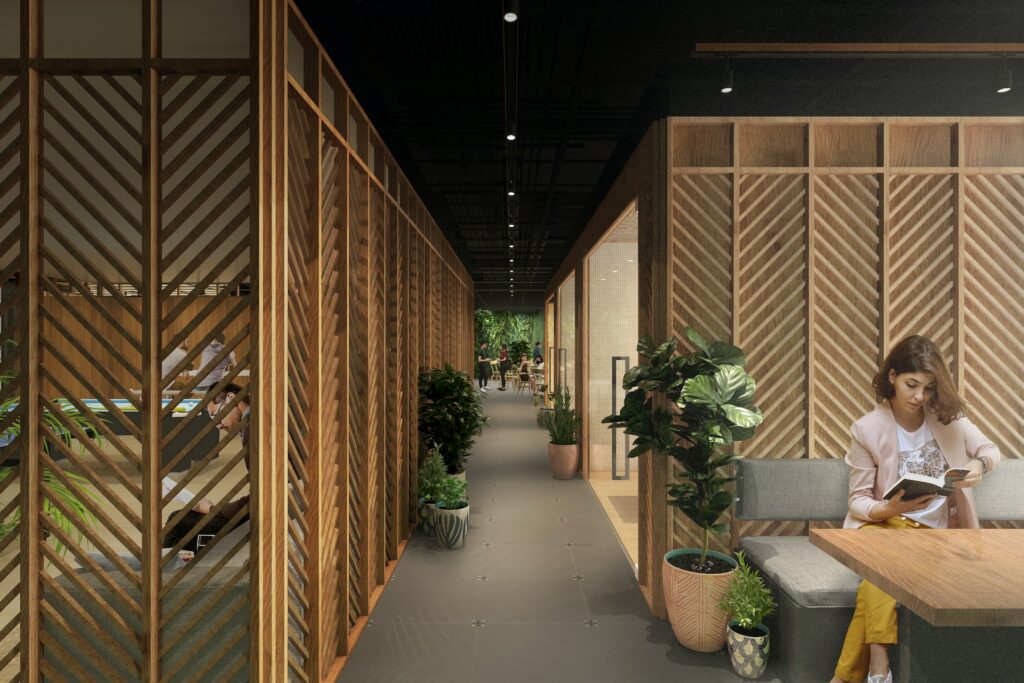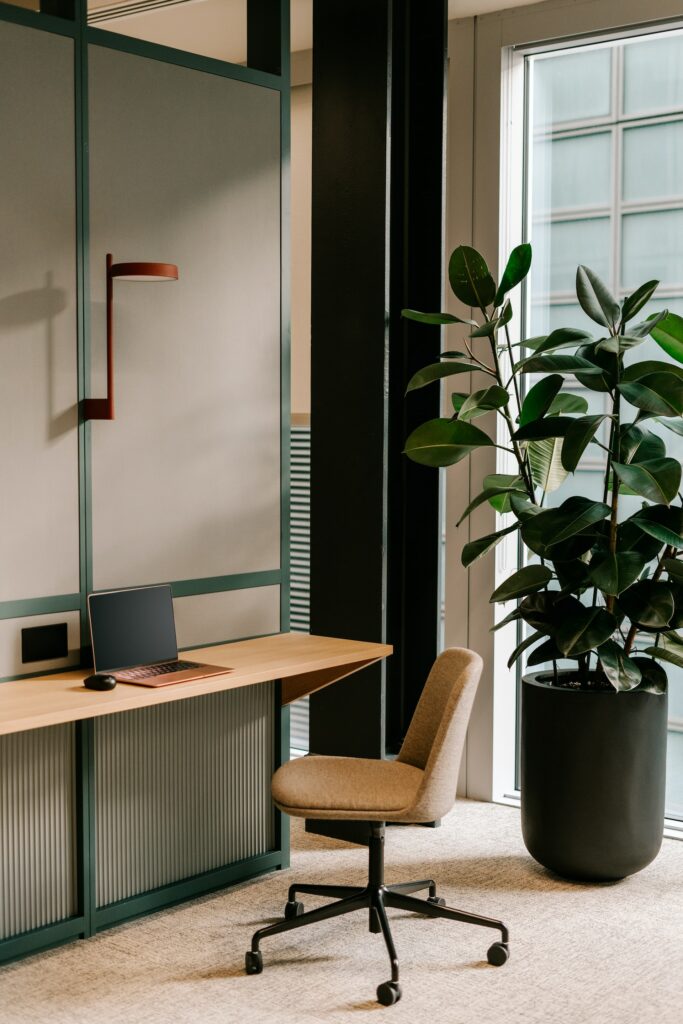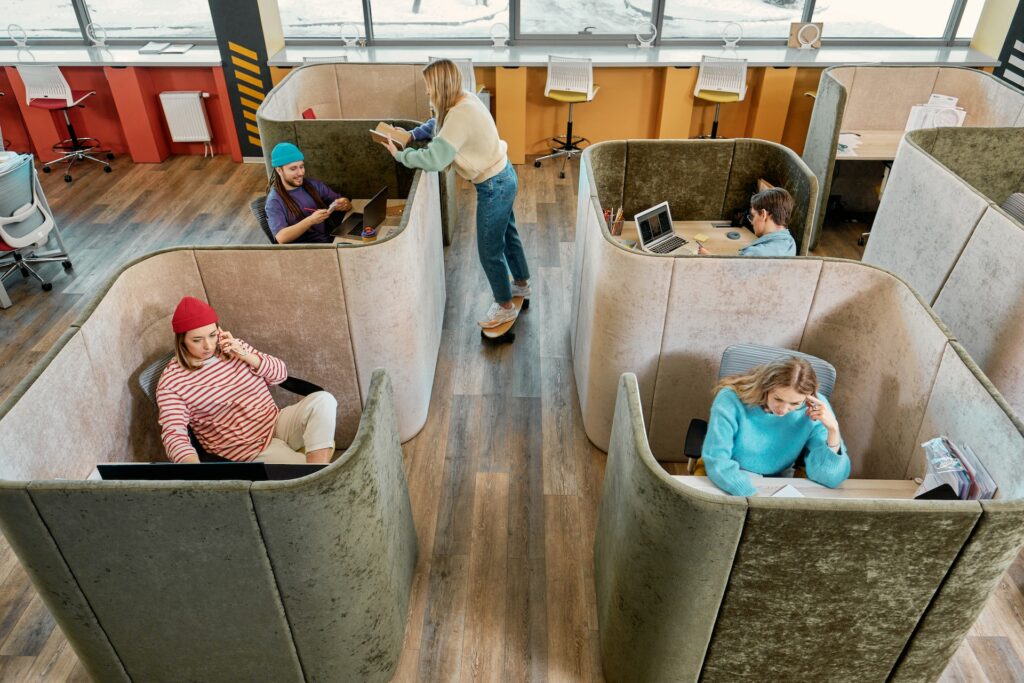In the world of business, first impressions are everything. The moment a client or visitor steps into your office, they begin to form an opinion about your company. Within seconds, they’re absorbing countless visual cues – from the lighting and colour schemes to the furniture arrangement and overall atmosphere. These initial impressions can profoundly impact business relationships, influencing everything from client retention to partnership opportunities.
The design of your office can significantly influence these perceptions, setting the tone for the interactions that follow. A well-designed office can make visitors feel at ease, fostering a sense of trust and comfort that can be instrumental in building successful business relationships. It’s more than just creating an attractive space; it’s about crafting an environment that communicates professionalism, attention to detail, and respect for those who enter it.
In an increasingly competitive business landscape, where companies vie for the same clients, partnerships and colleagues, office design has emerged as a powerful differentiator. It serves as a physical manifestation of your brand promise and corporate culture. When done right, it can transform a routine business meeting into a memorable experience, turning sceptical prospects into enthusiastic clients. The investment in thoughtful office design pays dividends not only in immediate client impressions but also in long-term business relationships and employee satisfaction.
Moreover, the psychological impact of physical spaces on human behaviour and decision-making is well-documented. A thoughtfully designed office can reduce stress, enhance communication, and create an atmosphere conducive to productive discussions and creative problem-solving. Here’s how you can harness the power of design to create spaces that truly resonate with your visitors and clients…
The Power Of Design
Design is not just about aesthetics; it’s about creating an environment that reflects your company’s values and ethos. It’s about creating a space where people feel comfortable, valued, and inspired. When visitors and clients walk into your office, they should immediately get a sense of who you are as a company, boosting brand awareness in the process.
The Welcoming Reception
The reception area is the first point of contact for visitors and clients. It should be warm, welcoming, and professional. A comfortable seating area, a friendly receptionist, and a clean, clutter-free environment can immediately put visitors at ease. Consider incorporating your brand colours subtly into the décor to create a cohesive brand experience.
Comfortable Meeting Rooms
Meeting rooms should be designed with comfort and functionality in mind. Ergonomic chairs, a spacious table, and good lighting can make long meetings more bearable. Additionally, consider incorporating elements such as artwork or a feature wall to stimulate conversation and creativity.
Quiet Spaces
In today’s open-plan offices, providing quiet spaces where visitors can make phone calls or have private conversations is essential. These spaces show that you respect your visitors’ need for privacy and can make them feel more comfortable.

Accessibility
As the team at CCWS Interiors tell us, it’s essential to ensure your office is accessible to everyone, including those with disabilities. This not only complies with legal requirements but also sends a strong message about your company’s commitment to inclusivity.
Cleanliness & Organisation
A clean and organised office is a sign of a well-run company. Regular cleaning and maintenance show that you care about your workspace and, by extension, your work.
Interactive Technology
Incorporate interactive technology into your office design. This could be as simple as a digital sign-in system at reception or as advanced as a virtual reality (VR) tour of your products or services. This not only impresses visitors but also shows that your company is forward-thinking and innovative.
Artistic Expression
Consider commissioning a local artist to create a unique piece of art for your office. This not only supports the local arts community but also provides a unique talking point for visitors. It could be a mural that reflects your company’s mission or a sculpture made from recycled materials, demonstrating your commitment to sustainability.
Sensory Experiences
Engage your visitors’ senses with a signature scent or a playlist of calming music. A pleasant aroma can create a positive first impression and a relaxing atmosphere, while the right music can set the tone for productive conversations.
The Power Of Biophilic Design
Biophilic design is an innovative approach that seeks to connect people and nature within built environments and spaces. It’s not just about adding a few plants here and there; it’s about incorporating natural elements at a fundamental level, such as using natural materials like wood and stone, creating spaces that mimic natural environments, or even incorporating water features. This can create a calming, stress-reducing environment that can put visitors at ease and stimulate creativity.


The Storytelling Space
Every brand has a story to tell, and your office space can be an excellent medium to narrate that story. Consider creating a dedicated storytelling space in your office — it could be a wall displaying your company’s history, a showcase of your most significant achievements, or even a digital screen looping testimonials from satisfied customers. This not only engages visitors but also helps them understand your brand’s journey and values on a deeper level.
Learning From High-Stress Environments
When it comes to creating a calming and reassuring environment, there’s much that offices can learn from spaces specifically designed to reduce anxiety and stress. Various industries – from hospitality to wellness retreats – have perfected the art of soothing visitors and creating environments that promote calm and confidence. These settings offer valuable insights that can be applied to office design.
Embracing A Calming Palette
Spaces designed for relaxation and stress reduction often employ soft, calming colour schemes to create a soothing atmosphere. Offices can adopt this approach, moving away from stark whites or corporate greys, and embracing colours that are known to reduce stress and stimulate creativity, such as soft blues, greens, or even warm earth tones. Research in colour psychology demonstrates that certain hues can lower (and, indeed, raise) heart rates and promote feelings of tranquillity, making them ideal choices for areas where important discussions take place.

Prioritising Privacy
In environments where confidentiality and comfort are paramount, privacy becomes a key design element. This is achieved through strategic space planning, acoustic treatments, and thoughtful partitioning. In an office setting, this could translate to private meeting rooms with proper sound insulation, semi-enclosed collaboration spaces, or quiet zones where sensitive conversations can be held without fear of being overheard. This not only respects the privacy of visitors but also creates an atmosphere of trust and professionalism.
Providing Thoughtful Distractions
Many calming environments incorporate elements that provide gentle mental engagement to help reduce anxiety and create a more relaxed atmosphere. Offices can implement this principle by providing engaging elements in waiting areas or meeting rooms. This could include curated reading materials relevant to your industry, interactive digital displays showcasing company innovations, living walls or aquariums that provide visual interest, or even simple puzzles or brain teasers that can serve as conversation starters. These elements serve dual purposes: they reduce wait-time anxiety and demonstrate attention to visitor comfort.
The Bottom Line
Office design plays a crucial role in making visitors and clients feel at ease. By creating a welcoming, comfortable, and inclusive environment, you can foster positive relationships with your clients and visitors, ultimately contributing to your business’s success. Remember, your office is a reflection of your brand, and a well-designed office can speak volumes about your company’s values and ethos.




